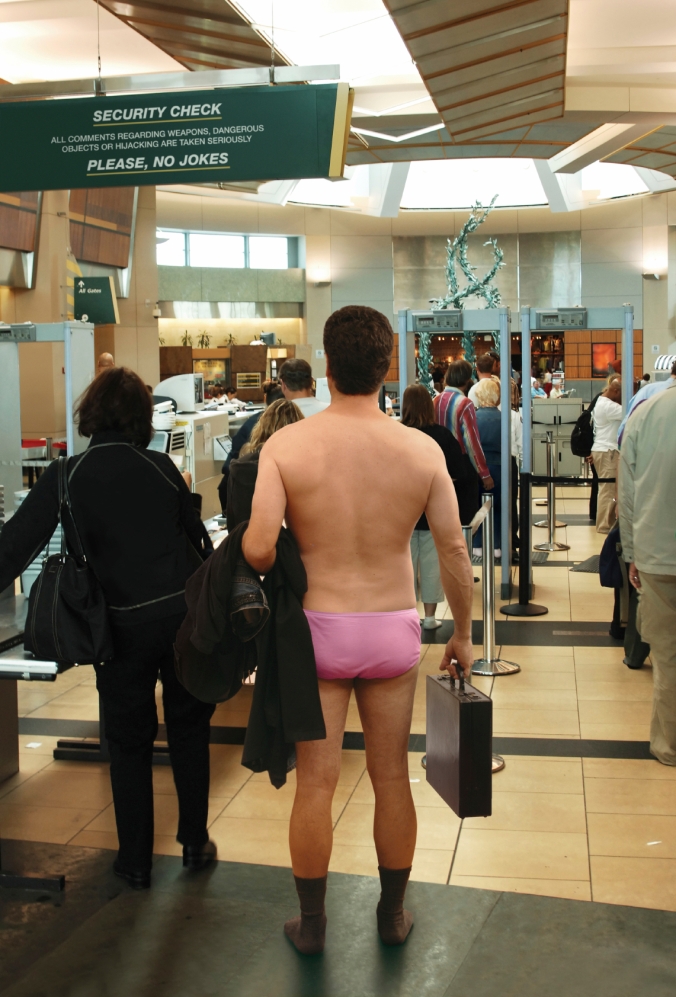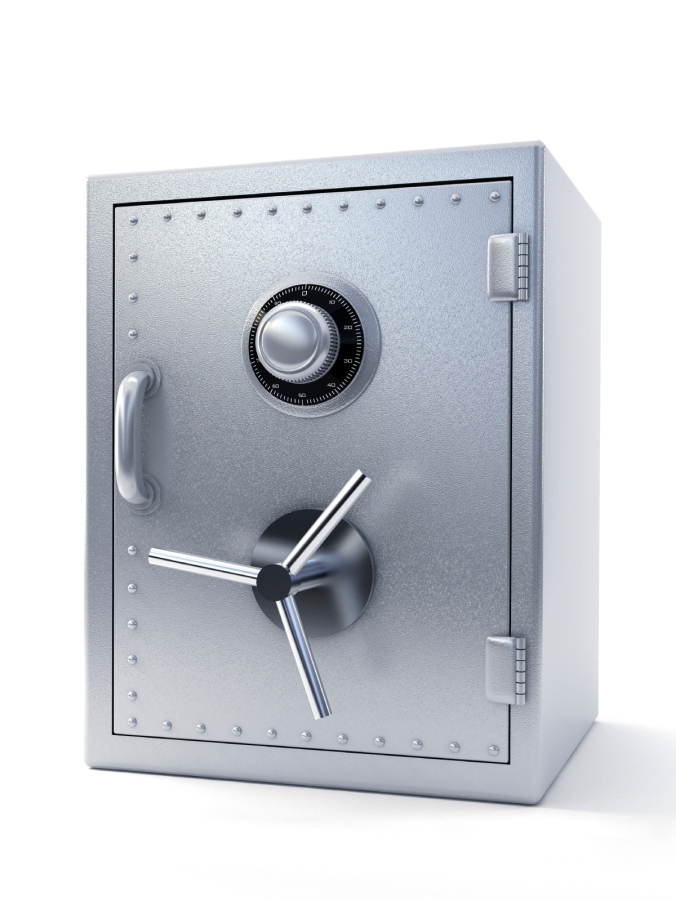
As I have previously documented, Chicago’s O’Hare Airport is not my favorite. (Honorable Mention in my Worst Airports for Amputees list. What is it that could possibly rouse me from my nearly 9-month less is more typing slumber? Chicago’s O’Hare Airport, August 2016 version.
I walked into O’Hare’s Terminal 3 this past Tuesday and approached the security line, electronic boarding pass in hand. I expertly slipped off my belt while retrieving my small plastic bag of liquids from my suitcase, placing them together in a bin. Almost simultaneously, I flipped open my satchel and extracted my computer, placing it into a box of its own. I was in full-on travel-ninja mode.
I stepped up to the body scanner, alerted the TSA official that I have a prosthetic left leg, and placed my hands over my head. I walked out and immediately quarantined myself next to the machine that I knew the TSA agents would have to use to test the swabs they would rub against my prosthesis and hands.
A somewhat pleasant, roundish TSA agent made his way to me and queried as to the reason for my presence in front of him. I explained the situation and lifted my pant leg so that he could more easily swab the prosthesis.
“You’ve been through this before,” Agent Round commented as he knelt down to take the sample. He placed it in the machine.
And it set off an alarm for the presence of a potentially dangerous substance.
Now, this has happened to me on more than one occasion. The first time was at JFK several years ago. After the initial positive result, TSA agents checked my suitcase. They inserted the swab into the machine and it tripped again. They pulled every individual item out of my suitcase and swabbed a third time. The machine issued yet another alert.
Ultimately, very large men with short-sleeved polo shirts indicating that they were explosives efforts materialized in front of me. After talking to me for 30 seconds, the lead agent peered at the offending machine and said, “Hey, this is missing its O-ring – it’ll always alarm if it’s missing the O-ring!” A quick apology followed by a perfunctory private screening sent me on my way.
The next time was at the Orlando airport. With the previous experience etched into my mind, I asked the TSA agent to run the triggering swab in a second machine to verify whether the alarm was actually linked to my luggage or constituted a mechanical malfunction of the testing equipment. This incredibly helpful man simply told me to walk on through, sharing his opinion that it “was definitely” the machine and not explosives strapped to or hidden in my prosthesis. Somewhat dumbstruck, I proceeded to my gate, but not before having an extensive internal monologue about whether I should insist that he screen me again just on principle.
Now, at O’Hare with Agent Round calling over a superior to figure out what to do, I suggested that perhaps they could swab me again and run the test from another machine.
“This has happened to you before?” asked Agent Round.
“Yes – I don’t want to overstep here, but I can tell you it’s probably the machine.”
“It probably is the machine,” he agreed.
But he ignored my entreaty for a new test, instead directing me to a different area, handing me off to a taller, less round TSA agent. Agent Taller informed me that we would have to wait for a third TSA agent to meet with me. In the meantime, a female agent opened up my suitcase and swabbed everything in it, placing the sample into a different machine, where it returned a clean result.
“I’m telling you,” I said to Agent Taller as soon as my luggage failed to alarm, “it’s most likely an issue with the first machine. It would be great if you could swab me and run the test again on this one.” Agent Taller stared blankly at me before grabbing a giant, standing fan, and turning it on so that he could stand in front of it. I took this to mean that we were both going to be there for a while.
I don’t have a major issue standing for extended periods of time. But as I waited for Agent Missing to appear and ruminated on my situation, I thought, “They know I’m an above-knee amputee. But they’ve never asked me if I’m o.k. standing up; they’ve never offered me a chair; and they’ve told me we have to wait until Agent Missing is here, which, by all objective signs, does not appear to be an imminent event.” And, confident that I was not a terrorist, I started a slow, long burn with every passing minute. I knew the first machine was faulty; I knew that a second test would confirm that fact; and I fumed that even though I would surely turn down the offer of a chair, no one had the presence of mind to ask me about it.
After roughly 5 minutes, Agent Missing came out of a small office. “The screening rooms are all full,” he commented, as he walked me towards said screening rooms, Agent Taller in tow with my luggage. (The screening rooms, incidentally, were not all full.)
When the door closed, Agent Missing looked at Agent Taller and said, “Tell me what happened here. Did he alarm after you checked the prosthesis and his hands?”
“Yes,” Agent Taller replied.
“No,” I interjected. “It alarmed after the prosthesis – my hands were never checked.” Agent Missing did not appear happy to be hearing from me. He looked back at Agent Taller.
“Did you check the prosthesis and his shoes?” he asked.
“Well, I wasn’t the one doing it,” said Agent Taller, now realizing that, in fact, he hadn’t performed a single test on me himself.
Agent Missing looked back at me, annoyed, waiting for my input. “I honestly don’t know whether he swabbed the shoe or not,” I said. “I wasn’t really paying attention.”
“Go get him,” ordered Agent Missing. “I can’t do anything until I know what happened.” Agent Taller scurried out, soon returning with Agent Rounder, who confirmed that he had swabbed my shoes.
Armed with this knowledge, Agent Missing proceeded to perform a comprehensive pat-down of my back and front, complete with all TSA-required warnings about “back of the hands” and “sensitive areas,” He then swabbed his gloves thoroughly, placed the swab in a machine sitting in the screening room, and watched it turn up a negative result. “You can go,” he said.
As I reassembled my luggage, I pondered all of the preceding events, repeatedly coming back to the same simple question: why couldn’t Agent Round or Taller have done the secondary pat-down and test immediately after the first false positive? At first, I thought the likely answer would be something along the lines of, “Once a machine alarms, we can’t just let someone continue through even if a subsequent test on a different machine yields a negative result. After all, what if the second machine is the one with a problem?” But upon further analysis, that doesn’t really make sense – Agent Missing implicitly concluded that Machine 2 trumped Machine 1 after performing a full body pat-down.
I’m not quick to pile onto TSA. Nine times out of ten, my interactions with agents across the U.S. are downright cordial and complete non-events. But whenever the unusual happens, the internal logic of how I get processed and ultimately sent on my way defies easy explanation.
If Agent Missing had no information – zero – about what happened before he ever met me, what would he have done? Presumably, he would’ve performed a comprehensive pat-down and swab test to make sure it was safe to let me on a plane. If he had found out that Agent Round had swabbed my hands but not my prosthesis, what would he have done? Full-body pat-down and swab test. If he had found out that no agent had even seen me, much less tested me, before making his acquaintance, what would he have done? I’m thinking a pat-down and swab test.
In short, I can’t think of a single reason why an amputee who trips an alarm wouldn’t immediately be tested again on a second machine in order to verify whether the “positive” result is connected to the person or to the testing equipment. And I have even less understanding of why that second test needs to occur in a private screening room as opposed to in the main security area. (Indeed, all of the other times I’ve been in a private room, agents have asked me to lower my pants so that they can examine the socket of my prosthesis. By definition, that’s the only reason why you would ever move someone who hasn’t requested it to a private room. Forcing an amputee to walk someplace private to conduct an examination that doesn’t require privacy makes no sense. In Agent Missing’s defense, perhaps he didn’t know whether he was going to need to ask me to drop my pants beforehand, but still …)
Postscript: things went downhill from there in a way that is unique to (and, sadly, regular for) O’Hare. My gate was changed from one close to the main hub of Terminal 3 all the way to the farthest reach of the “K” wing (Gate K20, anyone?). Fifteen minutes before our scheduled boarding time, the gate attendant announced that our flight had been switched to the “H” wing, causing a mad scramble of all passengers to find the new, distant gate.
But don’t fear, I didn’t miss the flight. I received an email alert shortly after high-tailing it to H6 telling me it had been delayed 15 minutes, followed less than 90 seconds later by another alert saying that the flight would be delayed an hour.
God, I love O’Hare.

